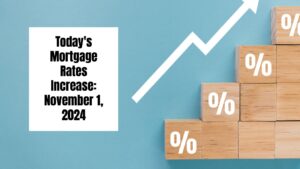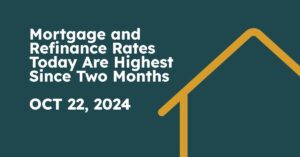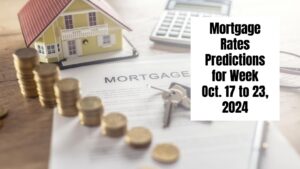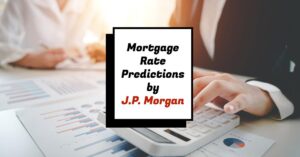Today’s mortgage rates reflect a notable increase, with the average rates for different loan types rising compared to last week. This shift means that anyone looking to borrow money for a home will find themselves dealing with a more expensive mortgage.
Today's Mortgage Rates Increase: November 1, 2024
Key Takeaways
- Average rates for major mortgage types have increased this week.
- 30-Year Fixed Rate: 6.90%, up from 6.80%.
- 15-Year Fixed Rate: 6.16%, an increase from 6.07%.
- 5/1 Adjustable Rate Mortgage (ARM): 6.38%, up from 6.26%.
- 30-Year Fixed Jumbo Rate: 6.91%, up from 6.82%.
- Mortgage rates fluctuate based on economic factors, including Federal Reserve policies.
Current Mortgage Rate Overview
As of November 1, 2024, mortgage rates have seen a significant uptick across the board, according to Bankrate. Here’s a breakdown of the rates:
- 30-Year Fixed Rate: 6.90% (last week: 6.80%)
- 15-Year Fixed Rate: 6.16% (last week: 6.07%)
- 5/1 ARM: 6.38% (last week: 6.26%)
- 30-Year Fixed Jumbo Rate: 6.91% (last week: 6.82%)
- 30-Year Fixed Refinancing Rate: 6.91% (last week: 6.77%)
These figures show a consistent rise in rates, with the 30-year fixed mortgage rate now averaging 6.90%, which is an increase of 0.10% compared to last week. Borrowers should expect to pay $658.60 in principal and interest for every $100,000 borrowed.
Factors Influencing Today's Mortgage Rates
The rise in today's mortgage rates is influenced by several key factors, including:
- Federal Reserve Decisions: Recently, the Federal Reserve cut interest rates by half a point. This was the first such move since the pandemic, suggesting that authorities are attempting to stimulate the economy amid various pressures. The Fed's actions tend to influence long-term mortgage rates, which typically move in tandem with the yield on 10-year Treasury notes.
- Economic Outlook: Investors’ confidence in the economy will also impact mortgage rates. If the economy appears stable or improving, demand for Treasury notes decreases, leading to higher yields and consequently raising mortgage rates.
- Inflationary Pressures: Inflation remains a significant concern. Rising costs of goods and services can lead to higher mortgage rates as lenders adjust to mitigate risk.
Comparison to Historical Rates
To understand where today’s rates stand, it’s helpful to look at historical context. The current 30-year fixed-rate mortgage at 6.90% is considerably higher than rates seen during the pandemic, where they dipped below 3%. In fact, just a month ago, the average rate for a 30-year fixed mortgage was only 6.29%. Historical trends illustrate that mortgage rates can be volatile, influenced by economic conditions and government policy.
What This Means for Homebuyers and Homeowners
For prospective homebuyers, the increase in mortgage rates means higher monthly payments. For example, if you were to borrow $300,000 at today’s rate of 6.90%, your monthly payment would be approximately $1,968 for principal and interest, an increase from $1,825 a month ago at 6.29%.
On the other hand, existing homeowners may find this a favorable time to refinance, particularly if they can lock in a rate lower than 6.75%. According to a CoreLogic report, nearly 3 million outstanding mortgages are currently above this threshold, meaning many homeowners are eyeing refinancing options.
Consumer Sentiment Around Mortgage Rates
With mortgage rates hovering in the mid-6% range, consumer sentiment has started to shift. According to a recent survey by Bankrate, about 47% of homeowners indicated they would need rates to fall below 5% before feeling comfortable buying a home in 2024. This suggests a cautious approach among potential buyers, who are waiting for more favorable market conditions before making a move.
On the refinancing front, the recent surge in rates has made many homeowners reconsider their options. As rates rise, refinancing might become less appealing unless significant savings can be realized. It’s crucial for homeowners to evaluate current rates against their current loan situation and decide if refinancing is worth it.
Recommended Read:
Future Outlook for Mortgage Rates
Looking ahead, many analysts expect that mortgage rates could continue to fluctuate but may trend downward as we approach the end of 2024. The Federal Reserve is predicted to implement further rate cuts, leading to more favorable borrowing conditions. Nevertheless, some uncertainty remains regarding how quickly and significantly rates might decline. As noted by Greg McBride, chief financial analyst for Bankrate, while the Fed is making adjustments, it might take time before the marketplace fully reflects these changes.
Related Articles:
- Mortgage Rates Need to Drop by 2% Before Buying Spree Begins
- Mortgage Rates Predictions for the Next Three Months Q4 2024
- Prediction: Why Mortgage Rates Won’t Go Below 6% in 2024?
- Will Mortgage Rates Ever Be 3% Again: Future Outlook
- Mortgage Rates Predictions for Next 2 Years
- Mortgage Rate Predictions for Next 5 Years
- Mortgage Rate Predictions for 2025: Expert Forecast
- Prediction: Interest Rates Falling Below 6% Will Explode the Housing Market
- Mortgage Rate Predictions: Why 2% and 3% Rates are Out of Reach
- How Lower Mortgage Rates Can Save You Thousands?
- How to Get a Low Mortgage Interest Rate?
- Will Mortgage Rates Ever Be 4% Again?











